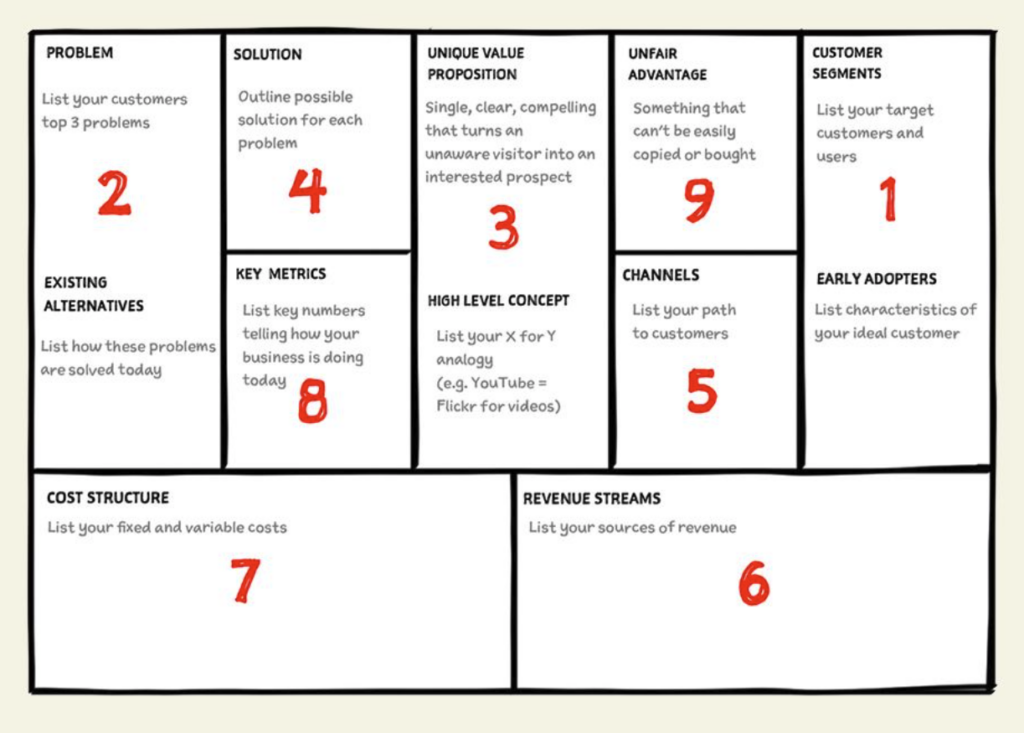The Lean Canvas is a strategic management tool that helps entrepreneurs and startups to outline their business model and evaluate their ideas. It is a simplified version of a traditional business plan that focuses on the most important aspects of a business and allows for quick iterations and adjustments.

The Lean Canvas consists of nine sections, each addressing a crucial aspect of a business model. Let’s go through each section and the key questions they address:
- Problem: This section focuses on identifying the target customer’s pain points, needs, or challenges.
Key questions include:- What are the main problems or challenges faced by your target customers
- Which specific customer segment are you targeting?
- Solution: This section highlights the proposed solution or product that addresses the identified problems.
Key questions include:- What is your unique value proposition or solution?
- How does your solution solve the customer’s problem or fulfill their needs?
- Key Metrics: This section involves identifying the most important metrics that will help you measure the success of your business.
Key questions include:- What are the key numbers or metrics that will determine the success of your business?
- How will you measure your progress and growth?
- Unique Value Proposition (UVP): This section defines the compelling reason why customers would choose your product or solution over alternatives.
Key questions include:- What makes your product or solution unique and valuable to customers?
- Why would customers choose you over your competitors?
- Channels: This section explores the various channels through which you will reach and acquire customers.
Key questions include:- What are the most effective channels to reach your target customers?
- How will you distribute or deliver your product or solution?
- Customer Segments: This section helps define and understand the specific groups of customers you are targeting.
Key questions include:- Who are your target customers? Be specific about demographics, preferences, etc.
- What are the most important customer segments for your business?
- Cost Structure: This section deals with the costs associated with running your business.
Key questions include:- What are the key cost drivers for your business?
- What are the most significant expenses you need to consider?
- Revenue Streams: This section focuses on the various sources of revenue for your business.
Key questions include:- How will you generate revenue from your product or solution?
- What are the different ways customers can pay for your offering?
- Key Partnerships: This section identifies the strategic partners or alliances that can help your business succeed.
Key questions include:- Who are your key partners, suppliers, or collaborators?
- How can they contribute to your business’s growth and success?
The Lean Canvas is necessary because it provides a concise and visual representation of the critical aspects of a business model. It allows entrepreneurs to quickly validate their ideas, make informed decisions, and iterate on their strategies. The template fosters a focused approach, encourages customer-centric thinking, and facilitates communication and collaboration among team members and stakeholders.
By utilizing the Lean Canvas, entrepreneurs can assess their business model, test assumptions, and identify potential risks or areas of improvement. It helps in aligning the team’s understanding, attracting investors, and guiding the execution of the business idea.
Additional Resources:
—
This page was last updated on July 17, 2023.
–
